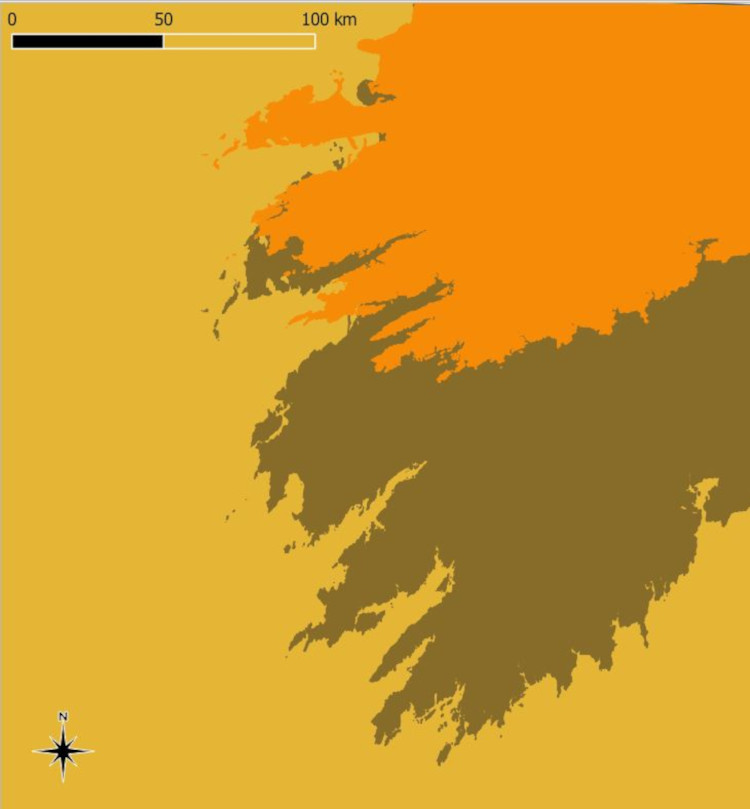Desert Sands and Sinking Sediments
The bedrock of West Cork - as it is at the present time - was originally deposited as sediment in a vast hot and arid desert basin. Dispel from your mind the green damp landscape of West Cork; the roaring Atlantic throwing breakers against the rocky coastline; the cliffs and inlets of the southern and western coasts; and the lakes, rivers, bogs and woodlands. Forget the lush green fields and grazing cows; the farms and cottages; the gardens, mountains and moorlands. Most important of all dismiss the coastline as the recent construction it is, a mere 10 to 12,000 years old. In their place, to the north of Kerry, and also to the west, out off the rocky Atlantic coast, across wide and flat dusty plains and beyond foothills, lay a vast range of mountains. Periodic rainstorms washed out rock, sand and mud from the mountains to the foothills and out, south, onto the plain. And away to the south, beyond where the Celtic Sea now washes over the continental shelf between Cornwall, Ireland and Brittany, lay the coastline where this desert met the sea.
At that time, between about 390 and 300 million years ago, during the mid-Devonian to early Carboniferous periods, this part of the earth’s crust lay at a low latitude, just south of the equator. The environment was probably similar to the North African Atlas Mountains and Sahara desert today.

A palinspastic reconstruction of West Cork, in which the shortening effect of folds and faults since the time of deposition has been 'undone'. The distance north to south across West Cork has increased by 100%.
The Munster basin stretched from Killarney in the north, to somewhere off the south coast, where the boundary of the basin has not yet been found. To the east it extended as far as county Waterford and the Comeragh Mountains, and to the west beyond the present rocky coast. At this time the area of the Munster basin was twice as wide north to south than it is now – subsequent folding and faulting has shortened the land surface. We can, experimentally, undo the faults and folds to find the true ‘flattened’ surface as it was before being deformed. This is known as a palinspastic reconstruction, and is represented by the image above.
NEXT - Rivers Without End - most rivers run down to the sea, but the waters running across the Devonian plains of West Cork 350 million years ago, just ran out of steam - and soaked in or evaporated away.